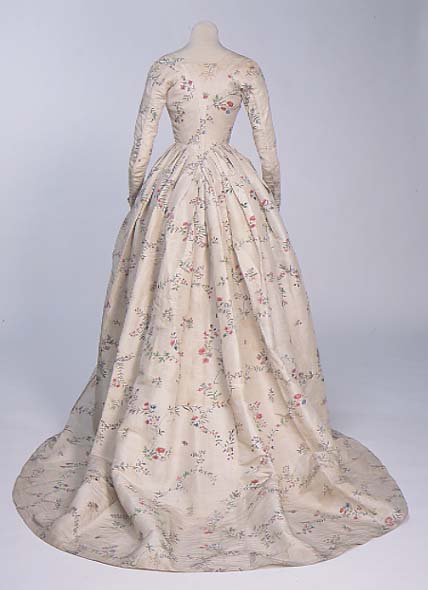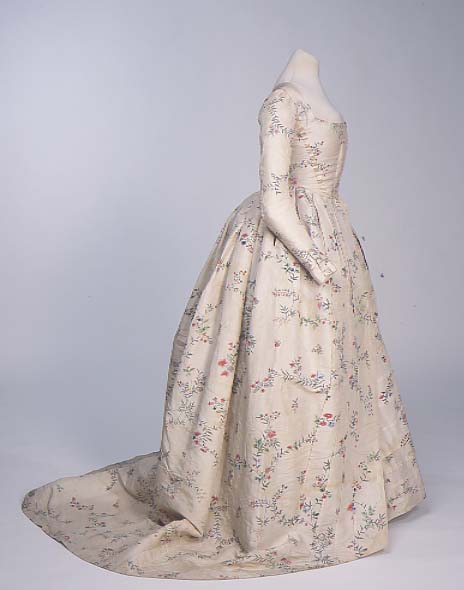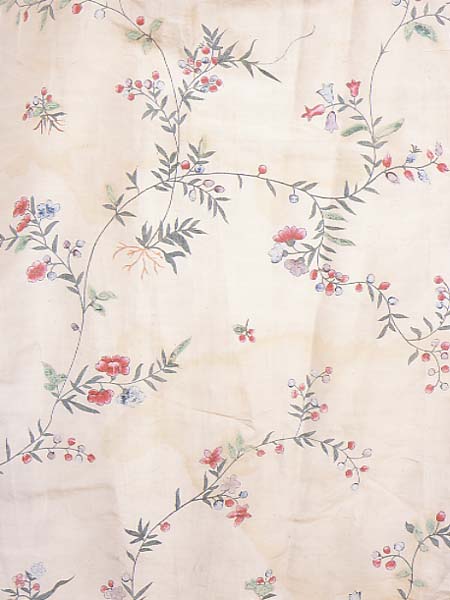dress
Summary
Open gown and petticoat of cream silk, painted with sprays of leaves, flowers and fruit, mainly in red, blue and green. The bodice is lined with white linen, is boned and comes to a sharp point at the back and features long, fitted sleeves. Gown skirt is cut with a wide circular train. Silk painted in China, exported to Britain, and made up by a mantua-maker. Dress shows various signs of contemporary alteration and is reputed to have been worn as late as 1806.
Display Label
There seems to be less dramatic change in the style of the wardrobe of the fashionable woman in the eighteenth century, than in the nineteenth, certainly in the essential types of dress. All dresses fitted a pattern, being ankle or floor length, with elbow length sleeves and a squared neckline, sometime with a short train, and with the skirt worn either closed, or open to show a decorative skirt or "petticoat". Around 1700, a gown known as a mantua was popular for most social occasions, comprising a long straight silhouette incorporating a short train, orginally worn down, and later looped up. By the middle of the century, two newer styles had taken over, the informal English robe or "nightgown" with the back tightly gathered into the waist, and the more formal French or "sack back" gown with flowing pleats from the shoulders. Other variations included the polonaise (with the skirt looped up over the petticoat as in an image below), and more simple "round gowns", which were increasingly popular as neoclassical influences developed after the 1780s (see Heideloff fashion prints below). Fabrics chosen were usually woven silk brocades or damasks, often in a stylised floral design until the 1770s, with simpler printed cotton callico and linen, or embroidered cotton muslin, increasingly fashionable thereafter.
Object Name
dress
Date Created
1785-1795
Dimensions
Skirt CB: 109.2cm
Robe CF: 147.3cm
Robe CB: 193cm
Shoulder to waist: 36.8cm
Skirt CF: 96.5cm
Hem: 315cm
Waist: 58.4cm
accession number
1952.365/2
Collection Group
Place of creation
United Kingdom
Medium
Legal
© Manchester Art Gallery



